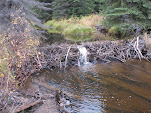In a recent conference (Nov 2025) Jim Hansen opined that some of the so-called tipping points are simply reversable phenomenon which would reverse if we were to decrease the green house gasses in the atmosphere* However he did say that he thought that the AMOC shutting down would be a genuine tipping point. So what would the consequences be. It has often be suggested that Europe would become quite a bit cooler as heat was no longer transferred from the tropics by the surface current and that hurricanes in the south would be stronger due to the extra heat left in tropical waters. Demise of corals and various other consequences are predicted. But could anything positive happen?
* They might show hysteresis (going down a different path than on the way up) so to us it would look, on our human time scale, like a tipping point.
Up to now, the temperature differential between the Arctic and the tropics has been decreasing as the Arctic heats faster than the rest of the world. And scientists have attributed a number of things to this decreasing of the 'delta T' between the tropics and the Arctic. Namely:
The slowing of the spin of the three Northern Hadley cells#.
The increased wobbliness, North and South of the Jet stream
Outbreaks of cold, polar weather further south than was usual
Outbreaks of warm weather further North than was usual
Stalling of weather systems, giving long periods of drought or precipitation to areas instead of the regular march of rainy and sunny weather systems around the world.
Creeping northward of agricultural zones
# There are three Hadley cells in the Northern Hemisphere. The Equatorial Hadley cell is powered by the heating of the land at the equator by the sun. The air rises, flows North and South at Altitude and sinks at 30 degrees North. The Polar Hadley cell is powered by air above the Arctic, radiating heat into space, becoming dense and sinking. Surface wind flow south along the ground and rise at 60 degrees North, returning north at altitude. The Ferrel cell fits between these Hadley Cells, powered by the friction with rising air at its northern border and falling air at its southern border. There are Jet streams at altitude where two cells meet. (very much simplified explanation)
With the heat differential re-established, due to the heat retention in the South and heat not transferred to the Arctic North, the Hadley cells should speed up to their previous intensity causing the Hadley cells to re-energise, the jet stream to increase to its previous speed and to stop waving back and forth, North and South so much. All the above mentioned effects should return to the situation that was usual many decades ago.
In addition the colder temperatures in the north should cause whatever snow falls on Greenland to stay there instead of melting and flowing to the sea. If the effect is intense enough, it might even lead to the accumulation of snow on the high lands of Baffin Island (where the North American continental glaciers begin to accumulate) Sorry, forget this last one. It is pulling a very long bow.
The Sea Ice in the Arctic should form earlier, melt later and increase in thickness over the winter, allowing the native people to utilize the ice as they did before the present melting occurred.
Agricultural zones, which have been creeping North for a few decades, should return to closer to their historical position although they might be narrower than they were before the warming began.
The more regular march of weather patterns, mentioned above, should favor dry land agriculture* as rain follows clear weather, follows rain, follows clear weather etc.
* Agriculture without irrigation
With the accumulation of snow on Greenland, sea level might stop rising although if the new regime results in more melting in the Antarctic, that could overpower this effect.
There is no way of telling if any of the above will come to pass until the AMOC shuts down and it does or does not occur. Models are prone to GIGO.
